
The battle between fixed blade and mechanical broadheads is one that will be around as long as bowhunting exists. The decision on which to go with literally plagued me when I really got into bowhunting and archery. Talking to different hunters on the subject was helpful to a point, but kind of frustrating. The mechanical guys swore by mechanicals and the fixed guys swore by fixed blade. Each of them had their own reasons for why they decided to shoot what they shoot. It soon became apparent that I was going to have to figure this out on my own. With lots of reading up on both types of broadheads, the pros and cons of each started to show themselves.
Fixed blade broadheads are a sure thing. They have definitely proven themselves in the bowhunting world and are not going anywhere by any means. There are no moving parts, which means they cannot fail, as long as they are put in the right spot. A downside that I found was a lot of times, they do not fly like field points do, meaning that come hunting season, you are going to have to sight your bow in again to your broadhead of choice. I didn’t like this, because I shoot my bow frequently throughout the season to try and stay sharp for that moment. By choosing a fixed blade you are also limiting your cutting diameter, meaning smaller entry and exit wounds. It is also my understanding that these tend to catch wind during flight and are more prone to being thrown off, so to speak. These issues might not bother a lot of people, but they sure wouldn’t stop bothering me. Aside from these few imperfections, I really did like that there were no moving parts. They are a tried and true bowhunting tool. A simpler is better approach, if you would.
While there are some moving parts on these, the wound channels that you get with them is nothing to turn your head at. These things can be downright grotesque when you start talking about blood trails and for me, that was something that was really alluring. Nobody likes wounding an animal and not being able to find it. The better the blood trail, the more chance you have to find the animal in my opinion. Another pro I found was that these heads do generally fly like field tips, meaning that I wouldn’t have to sight the bow in just for broadheads. With the pros I found though, I couldn’t stop thinking about the blades not opening and the broadhead failing on me. After all, we only get so many opportunities at animals with our bows and the potential to have one blown on a gear failure was something that really bothered me.
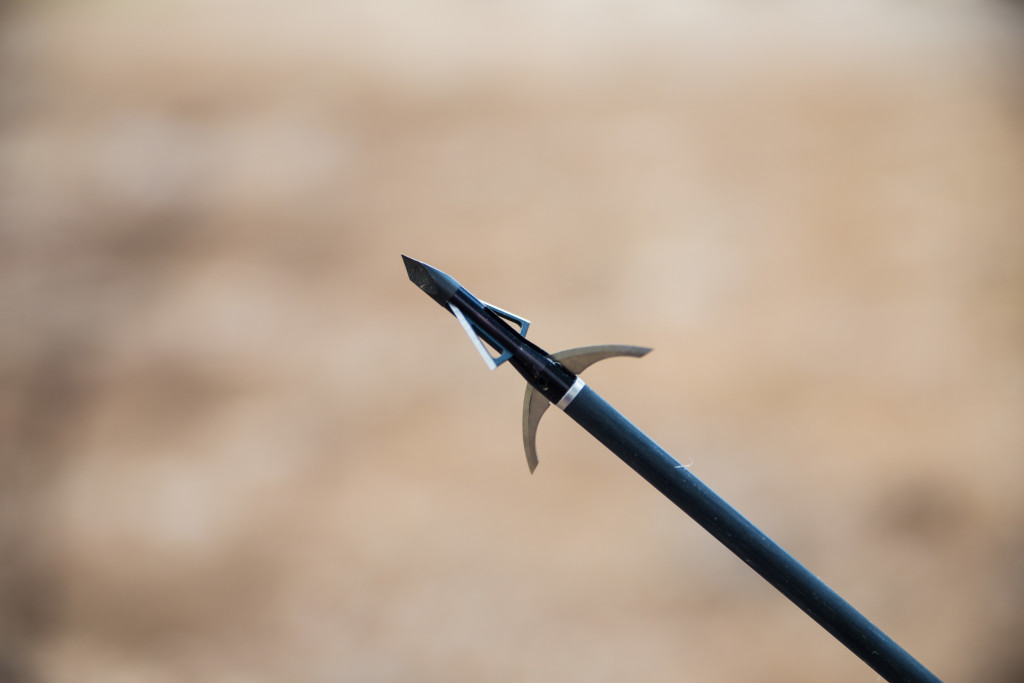 All of these questions were really irritating me until I found out about Grave Diggers. Why? Grave Diggers are actually both a mechanical AND a fixed blade broadhead. You get the best of both worlds. The devastation and classic dependability of the fixed blade and the field point accuracy capped with the awesome wound channel of a mechanical. This sounded perfect to me. Did they really work though?
All of these questions were really irritating me until I found out about Grave Diggers. Why? Grave Diggers are actually both a mechanical AND a fixed blade broadhead. You get the best of both worlds. The devastation and classic dependability of the fixed blade and the field point accuracy capped with the awesome wound channel of a mechanical. This sounded perfect to me. Did they really work though?
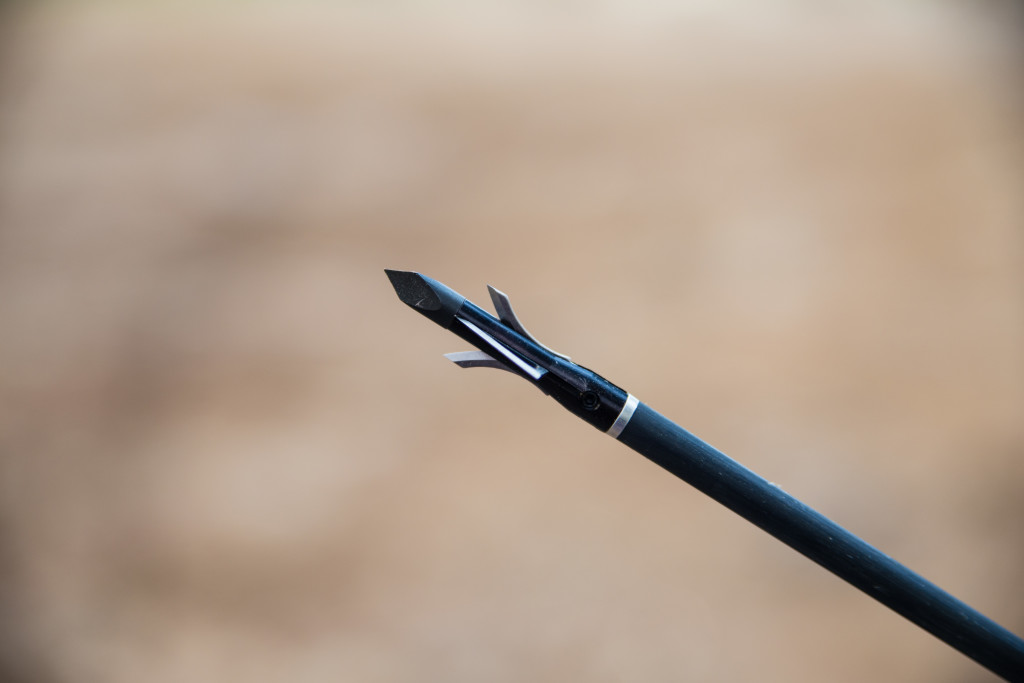
The Grave Digger is set up with a razor sharp 1″ fixed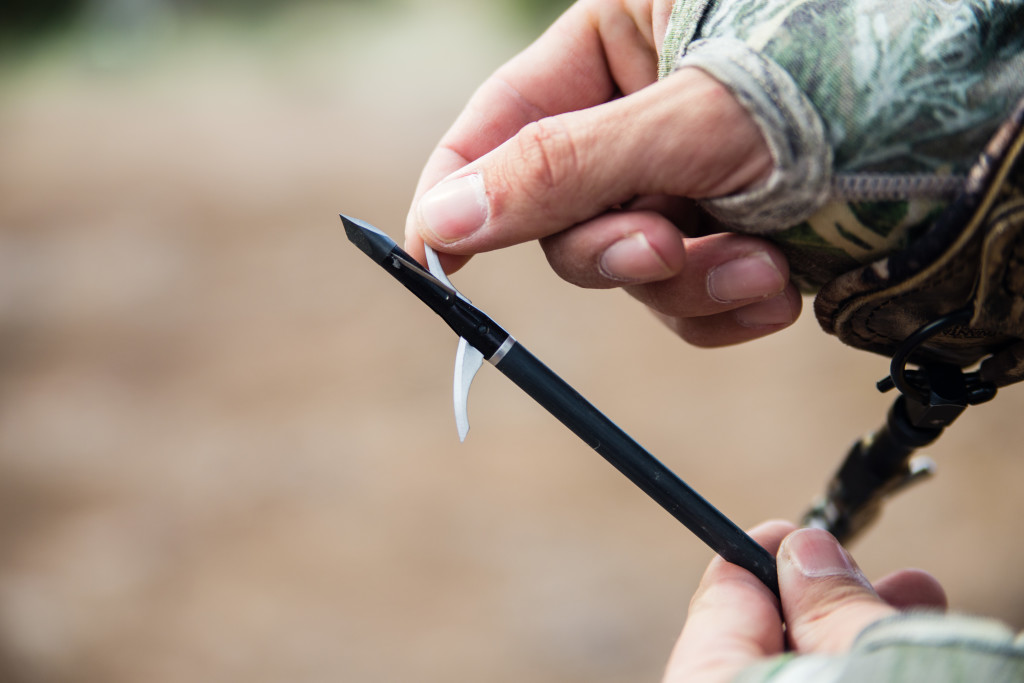 blade made of 420 stainless steel and 1 3/4″ cross opening curved mechanical blades. Unlike most mechanicals there are no O-rings or rubber bands that you have to attach to these to prevent premature deployment. These mechanical blades actually fold into each other in a cross fashion unlike other mechanicals on the market. The blades stay in place by tension put on them from a small screw located towards the bottom of the broadhead which is also the pivot point of the mechanical blades. This can be adjusted to your liking. The tighter you make the screw the harder it will be to make the blades deploy. Say you are shooting through ground blind mesh. You would want to tighten this screw up a bit to prevent the blades from deploying prematurely.
blade made of 420 stainless steel and 1 3/4″ cross opening curved mechanical blades. Unlike most mechanicals there are no O-rings or rubber bands that you have to attach to these to prevent premature deployment. These mechanical blades actually fold into each other in a cross fashion unlike other mechanicals on the market. The blades stay in place by tension put on them from a small screw located towards the bottom of the broadhead which is also the pivot point of the mechanical blades. This can be adjusted to your liking. The tighter you make the screw the harder it will be to make the blades deploy. Say you are shooting through ground blind mesh. You would want to tighten this screw up a bit to prevent the blades from deploying prematurely.
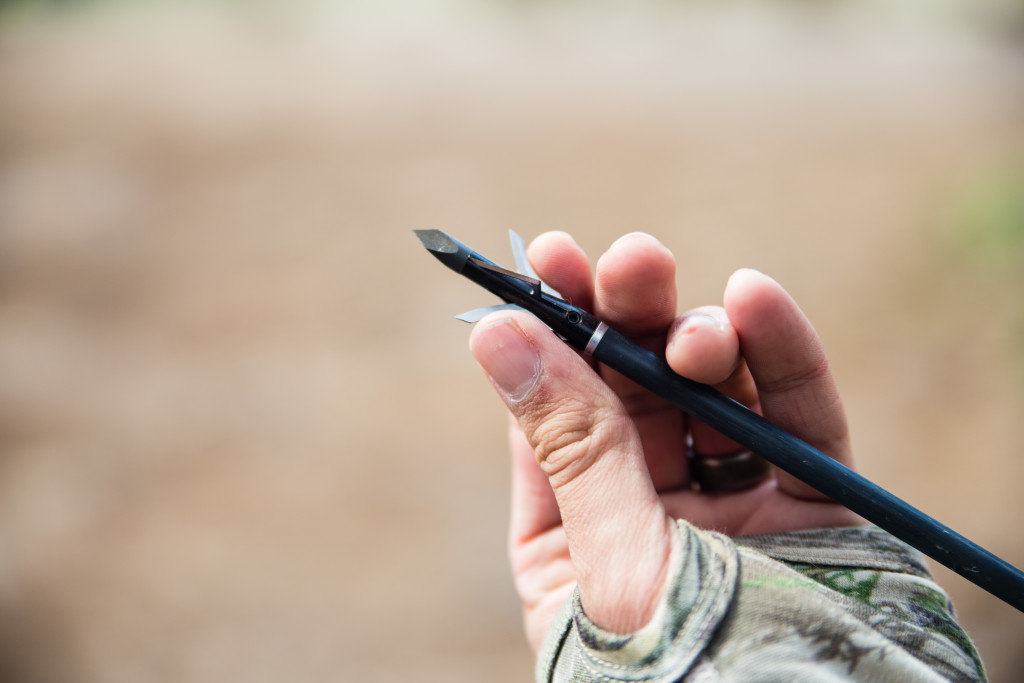
Traditionally, mechanicals deploy once the blunt tip of the blade hits the target. The forward motion being put up against this blunt tip is what made the blades catch the skin of the animal and open up. This presents a problem when taking quartering shots with the end result a lot of times being what the industry calls “jack knifing.” Jack Knifing is when the arrow hits the quartering target, followed up with the blunt part of the mechanical getting hung up on the skin, causing the arrow to go off of its intended flight path and lose a ton of kinetic energy, resulting in bad penetration. I have actually heard stories of arrows literally bouncing off the side of an animal. Nobody wants that. The difference between Grave Diggers and other mechanicals is the mechanical portion is actually sharp to the tip, not blunt. This means better penetration, especially on those quartering shots. Jack knifing doesn’t exist with Grave Diggers.
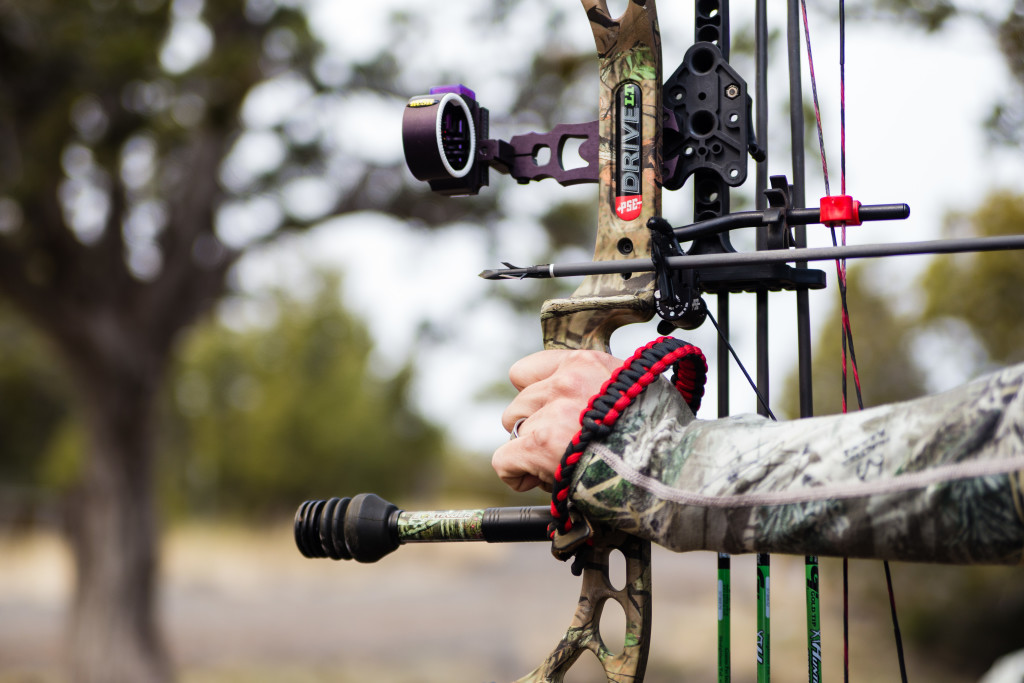
I don’t really have a lot to say about this, because there isn’t a whole lot to say. These broadheads fly like field points. Shoot them at 20 yards, shoot them at 80 yards. Doesn’t matter. No more having to sight your bow in for your broadhead of choice. End of story.
Being relatively new to archery hunting, I haven’t had a whole lot of opportunities at taking animals with my bow. I was fortunate enough to take a javelina with this broadhead earlier this year though, which you can read about in 2 of my earlier posts entitled, “Breaking the Ice Part 1” and “Breaking the Ice Part 2”. The broadhead performed great! It hit right what I was aiming at with a perfect pass through. It didn’t just pass through the animal. This thing went through the animal and kept on going! We found my arrow probably 40 yards are so behind the initial spot of impact. The blood trail was fantastic and easy to follow, which is what we all want right? Upon the arrival of my first archery kill, I was pretty impressed with the entry and exit wounds. They were about the size of a half dollar on each side of the animal. Can’t ask for anything more than that.
In my honest opinion, Dale Perry at No Limit Archery hit a homerun with his invention of the Grave Digger. This is for sure going to be my broadhead of choice for any animal that I hunt in the future. These come in cut on contact form and also in a chisel tip form with your choice of either 100 grain or 125 grain. If you are in the position that I was in when deciding what type of broadhead to go with or even if you are a seasoned bowhunter, give these a shot. You will not be disappointed. Field point accuracy, huge wound channels, generous blood trails, and dependability. What more can you ask for?
Want to pick some of these devastating heads for yourself? Visit the link below!
As an Amazon Associate I earn from qualifying purchases.
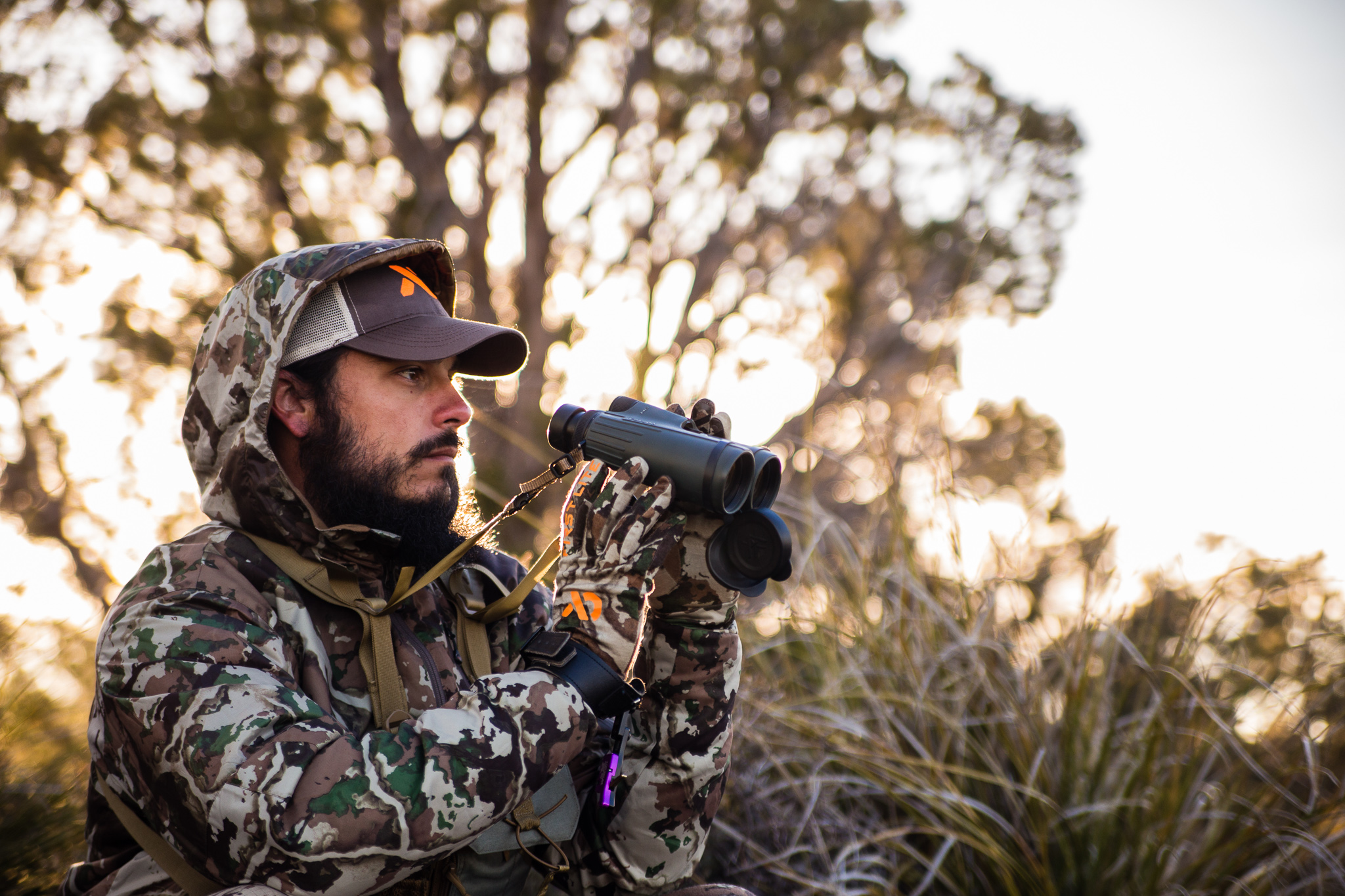

Copyright 2019 Dialed In Hunter
Design by NXNW.